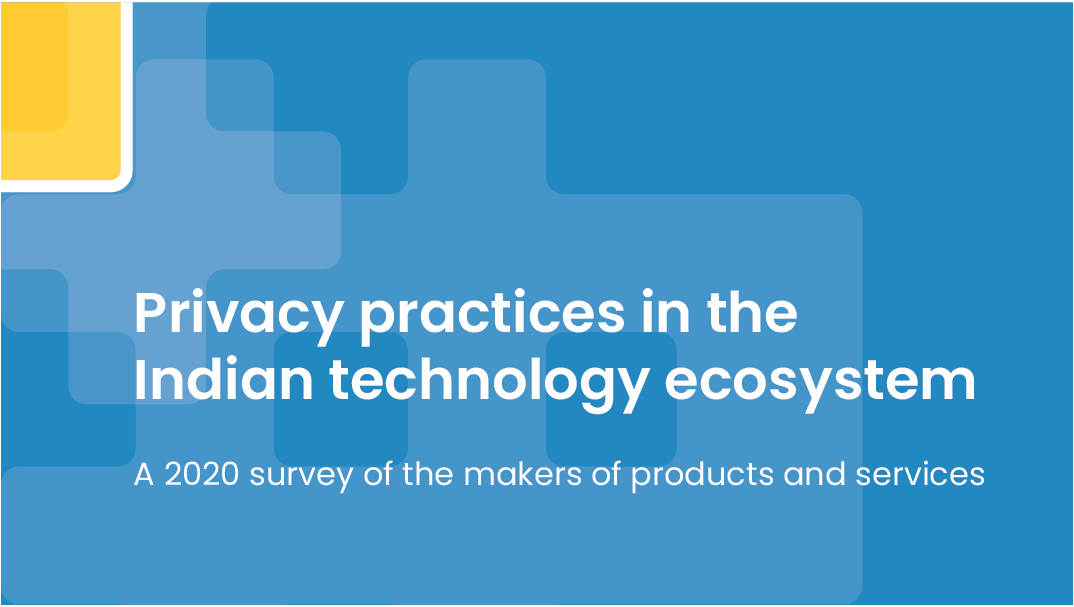
Privacy practices in the Indian technology ecosystem
A 2020 survey of the makers of products and services
Submitted Apr 6, 2021
In an essay titled ‘Right To Privacy’ in the Harvard Law Review in 1890, Samuel Warren and Louis Brandeis1 said,
In very early times, the law gave a remedy only for physical interference with life and property, for trespasses vi et armis. Then the “right to life” served only to protect the subject from battery in its various forms; liberty meant freedom from actual restraint; and the right to property secured to the individual his lands and his cattle. Later, there came a recognition of man’s spiritual nature, of his feelings and his intellect. Gradually the scope of these legal rights broadened; and now the right to life has come to mean the right to enjoy life, — the right to be let alone; the right to liberty secures the exercise of extensive civil privileges; and the term “property” has grown to comprise every form of possession — intangible, as well as tangible.
The idea of privacy is inbuilt into the idea of right to life. That one is allowed “ownership” over one’s thoughts, expressions, belief systems, and way of life, as long as it does not infringe on the similar rights of other individuals. Privacy breaks down into:
The idea of a right, also implies the idea of a remedy: that is, a right exists with the ability to enforce it, or to seek redressal when it is violated. Individuals have the right to ensure and enforce their individual privacy, and to seek out and employ means that secure this right.
Brandeis, Louis, and Samuel Warren. “The right to privacy.” Harvard law review 4.5 (1890): 193-220. https://www.jstor.org/stable/pdf/1321160.pdf ↩︎
Hosted by
Supported by
{{ gettext('Login to leave a comment') }}
{{ gettext('Post a comment…') }}{{ errorMsg }}
{{ gettext('No comments posted yet') }}